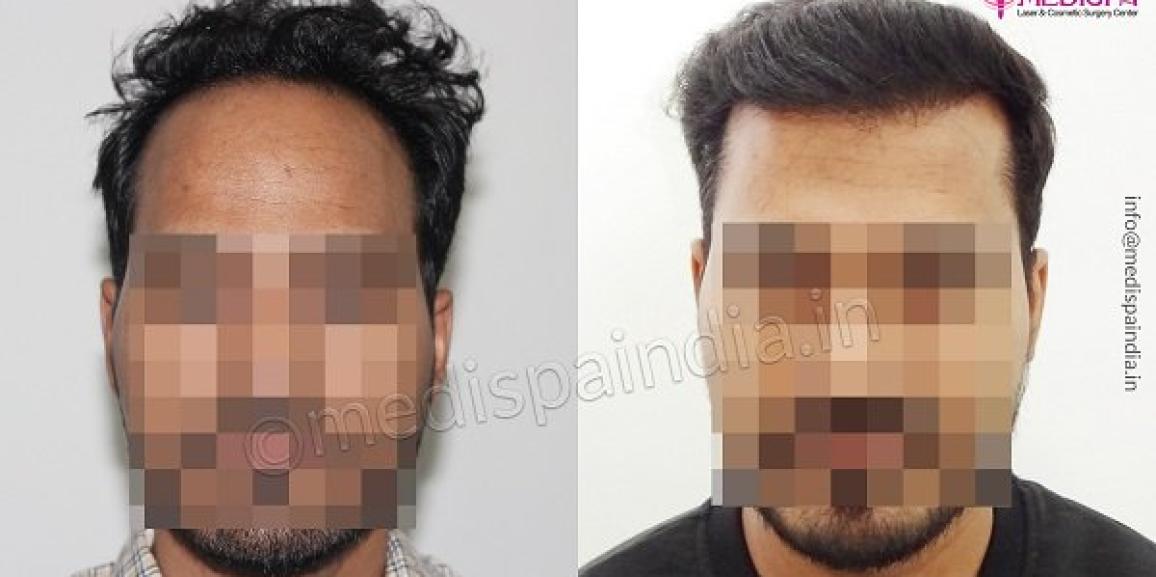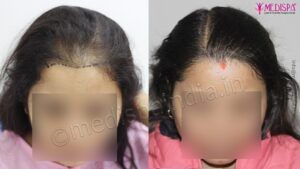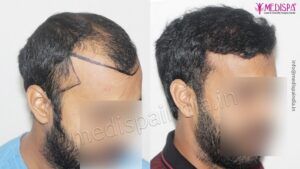
Hair transplants are the only method that can stop hair loss permanently if you wish to grow your hair out naturally again. The best and most dependable method for treating baldness at this time is hair transplantation. Transferring hair roots from donor areas to the bald area is the procedure’s main step.
Donor region: The region of your body known as the donor area is where the hair follicles used in hair transplant surgery are taken from. Permanent hair roots or DHT-resistant hair roots should be present in the donor location. The back and sides of your head, as well as other body parts like your chest, beard, etc., are typical donor areas.
Recipient area: The recipient area designates the location of the baldness that requires treatment.
The Medispa hair transplant clinic in Delhi and Jaipur is well known throughout the world for its top-notch hair transplantation. We are renowned for providing cutting-edge services and having the best success rate. The founder and principal surgeon of Medispa Clinic, Dr. Suneet Soni, is a top-tier surgeon whose abilities are valued by not only the many thousands of domestic patients, but also by patients from other countries and celebrities. Therefore, call us to make your dream of a perfect hair transplant experience a reality if you need assistance in planning such an amazing hair transplant.
Making a huge decision like considering a hair transplant as a treatment option for hair loss calls for thoughtful consideration. A few factors must be taken into account in advance to ensure a secure, trouble-free, and ideal hair transplant experience.
Why not? Hair transplant in Jaipur is receiving a lot of attention these days. The pink city’s hair transplant industry is thriving and well-regarded for its expertise. However, in addition to the high-quality services, there are a lot of less expensive solutions that could also be fatal. The hair transplant cost in Jaipur has dropped to an unacceptably low level, yet they may still be available at bargain clinics that may tempt you but endanger your general health.
So, instead of making snap decisions, take your time and make the best decision possible.
Planning a hair transplant procedure for successful results
It is advisable to be aware of the key components that must be carefully considered while undergoing the hair transplant surgery before choosing the operation. Planning for hair transplantation entails:
- Accurate diagnosis and treatment planning: For the practicality of a hair transplant procedure, accurate diagnosis and wise decision-making are essential. During discussions to determine the viability of the hair transplant operation in each individual case, a diagnosis of the cause of hair loss is made prior to the procedure. After carefully evaluating the patient’s medical history and examining the scalp, the diagnosis is reached. The diagnosis validates the eligibility and offers insight into the hair transplant process.
Based on the diagnosis and the evaluation of the stability of hair loss, predictions of future hair loss are also made, and other components of the hair transplant surgery are finalised.
- Use proper graft harvesting techniques: Once your eligibility for a hair transplant is confirmed, the technique will be chosen based on a number of variables, including the degree of baldness, the number of hair follicles needed, the patient’s age, sex, and the amount of hair density present in the donor area.
- Appropriate hairline design outlook: The hairline must be properly designed in order to produce the desired aesthetic results. To mimic a natural hairline design, the hair transplant surgeon needs to have a strong sense of aesthetics. Age, sex, facial profile, and the specific needs of the patient are all important aspects to take into account while designing the hairline. In order to get a successful hair transplant, the angles, alignment, and arrangement of the hair follicles are taken into consideration when carving the hairline.
- Proper implantation of follicular units while considering aesthetics: Slits are created according to the chosen hairline design before follicular units are transplanted. The most important stage that aims to produce natural looking results is this one.
- Meticulous aftercare: A successful hair transplant depends equally on the procedure’s effective execution and strict aftercare. To prevent any complications related to the treatment, it is imperative to strictly adhere to the surgeon’s recommendations.







